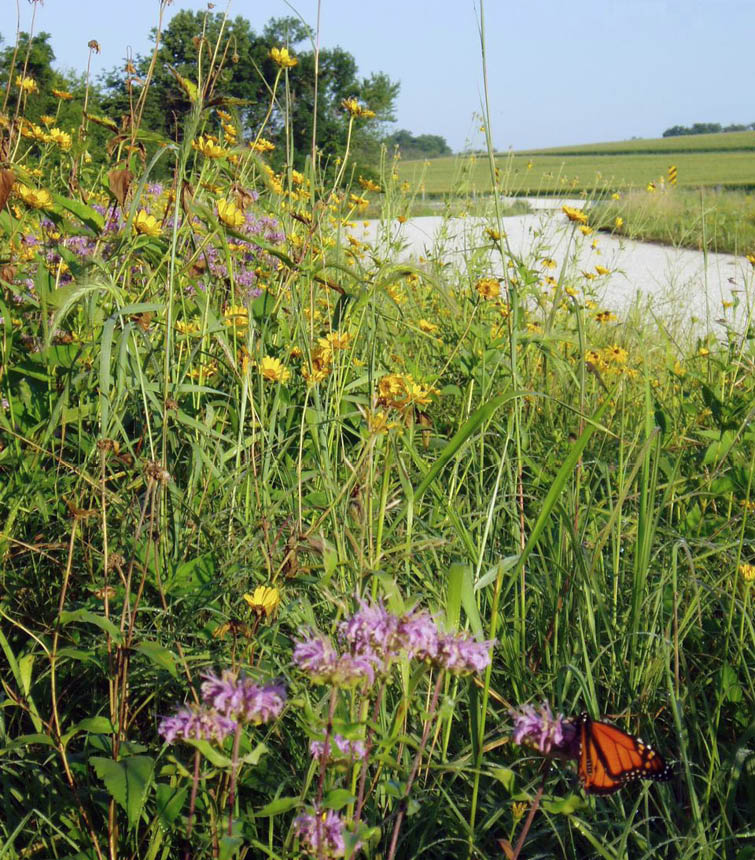ROADSIDE REVEGETATION
An Integrated Approach to Establishing Native Plants and Pollinator Habitat
1.1 An Integrated Approach

Figure 1-1 | Pollinator habitat on roadside
Roadsides offer an opportunity for improving ecosystems by establishing and maintaining native plant communities.
Photo credit: Kirk Henderson
Integrating societal goals for safe, efficient transportation with goals for ecological health is a crucial issue that is receiving increased attention from transportation agencies (Forman and others 2003; NRC 2005). Today, most road projects involve modifications to existing roads rather than new construction (NRC 2005). As roads are modified or updated section by section, a tremendous opportunity presents itself to remedy the oversights of the past, mitigate environmental impacts, and improve conditions for healthy ecosystems (Figure 1-1).
Native plants are a foundation of ecological function, affecting soil conservation, wildlife and pollinator habitat, plant communities, invasive species, and water quality. Although all of these ecological functions are important, recent emphasis has been placed on supporting pollinators and this facet is highlighted throughout this updated report. Establishing locally adapted, self-sustaining plant communities can also support transportation goals for safety and efficiency. Protecting existing native vegetation during construction and establishing native plants on roadsides following disturbance is key to integrating road systems into natural systems.
Past obstacles to establishing native plant communities on roadsides have been technical, informational, and organizational. Designer and project technical success can be achieved when effective strategies and practical techniques for revegetating the disturbed conditions with limited resources are made available to designers. Project success and efficiency can increase when multiple disciplines, ranging from landscape architecture to engineering, soil science, ecology, botany, genetics, entomology, and wildlife conservation are able to communicate and coordinate as a team early in the project planning, working cooperatively, not in isolation. Finally, improved interagency cooperation and planning processes that consider ecological effects at every step can enhance the success of a revegetation project.
This report offers an integrated approach to facilitate the successful establishment of native plants and pollinator habitat along roadsides and other areas of disturbance associated with road modifications. It guides readers through a comprehensive process of initiating, planning, implementing, maintaining and monitoring a roadside revegetation project with native plants and pollinator habitat.

